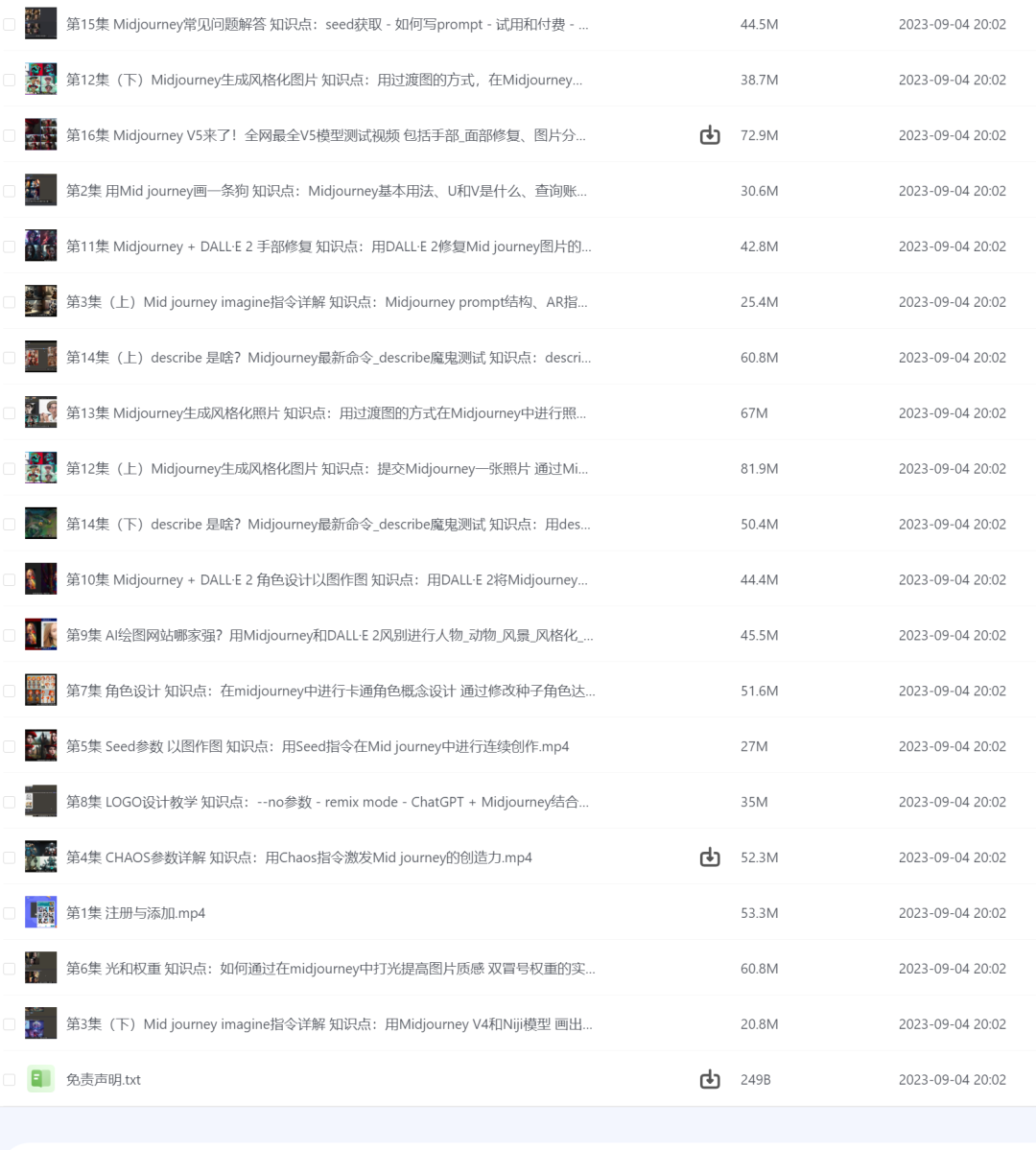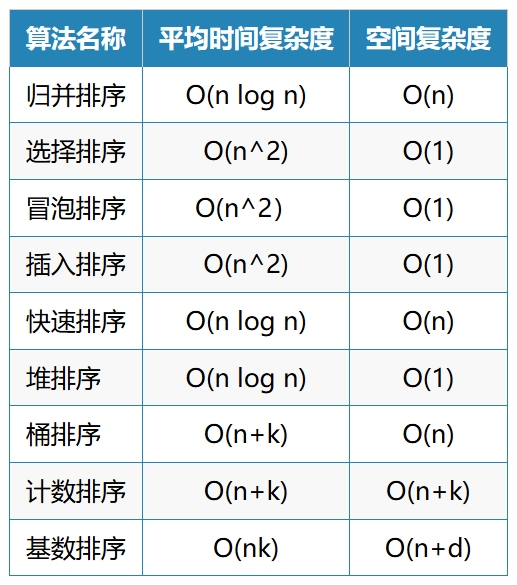任务:
●为解码器添加上注意力机制
一、前期准备工作
from __future__ import unicode_literals, print_function, division
from io import open
import unicodedata
import string
import re
import random
import torch
import torch.nn as nn
from torch import optim
import torch.nn.functional as F
device = torch.device("cuda" if torch.cuda.is_available() else "cpu")
print(device)
代码输出
cpu
- 搭建语言类
SOS_token = 0
EOS_token = 1
# 语言类,方便对语料库进行操作
class Lang:
def __init__(self, name):
self.name = name
self.word2index = {}
self.word2count = {}
self.index2word = {0: "SOS", 1: "EOS"}
self.n_words = 2 # Count SOS and EOS
def addSentence(self, sentence):
for word in sentence.split(' '):
self.addWord(word)
def addWord(self, word):
if word not in self.word2index:
self.word2index[word] = self.n_words
self.word2count[word] = 1
self.index2word[self.n_words] = word
self.n_words += 1
else:
self.word2count[word] += 1
- 文本处理函数
def unicodeToAscii(s):
return ''.join(
c for c in unicodedata.normalize('NFD', s)
if unicodedata.category(c) != 'Mn'
)
# 小写化,剔除标点与非字母符号
def normalizeString(s):
s = unicodeToAscii(s.lower().strip())
s = re.sub(r"([.!?])", r" \1", s)
s = re.sub(r"[^a-zA-Z.!?]+", r" ", s)
return s
- 文件读取函数
def readLangs(lang1, lang2, reverse=False):
print("Reading lines...")
# 以行为单位读取文件
lines = open('N11/%s-%s.txt'%(lang1,lang2), encoding='utf-8').\
read().strip().split('\n')
# 将每一行放入一个列表中
# 一个列表中有两个元素,A语言文本与B语言文本
pairs = [[normalizeString(s) for s in l.split('\t')] for l in lines]
# 创建Lang实例,并确认是否反转语言顺序
if reverse:
pairs = [list(reversed(p)) for p in pairs]
input_lang = Lang(lang2)
output_lang = Lang(lang1)
else:
input_lang = Lang(lang1)
output_lang = Lang(lang2)
return input_lang, output_lang, pairs
.startswith(eng_prefixes) 是字符串方法 startswith() 的调用。它用于检查一个字符串是否以指定的前缀开始。
MAX_LENGTH = 10 # 定义语料最长长度
eng_prefixes = (
"i am ", "i m ",
"he is", "he s ",
"she is", "she s ",
"you are", "you re ",
"we are", "we re ",
"they are", "they re "
)
def filterPair(p):
return len(p[0].split(' ')) < MAX_LENGTH and \
len(p[1].split(' ')) < MAX_LENGTH and p[1].startswith(eng_prefixes)
def filterPairs(pairs):
# 选取仅仅包含 eng_prefixes 开头的语料
return [pair for pair in pairs if filterPair(pair)]
def prepareData(lang1, lang2, reverse=False):
# 读取文件中的数据
input_lang, output_lang, pairs = readLangs(lang1, lang2, reverse)
print("Read %s sentence pairs" % len(pairs))
# 按条件选取语料
pairs = filterPairs(pairs[:])
print("Trimmed to %s sentence pairs" % len(pairs))
print("Counting words...")
# 将语料保存至相应的语言类
for pair in pairs:
input_lang.addSentence(pair[0])
output_lang.addSentence(pair[1])
# 打印语言类的信息
print("Counted words:")
print(input_lang.name, input_lang.n_words)
print(output_lang.name, output_lang.n_words)
return input_lang, output_lang, pairs
input_lang, output_lang, pairs = prepareData('eng', 'fra', True)
print(random.choice(pairs))
代码输出
Reading lines...
Read 135842 sentence pairs
Trimmed to 10599 sentence pairs
Counting words...
Counted words:
fra 4345
eng 2803
['je volerai vers la lune .', 'i m going to fly to the moon .']
二、Seq2Seq 模型
- 编码器(Encoder)
class EncoderRNN(nn.Module):
def __init__(self, input_size, hidden_size):
super(EncoderRNN, self).__init__()
self.hidden_size = hidden_size
self.embedding = nn.Embedding(input_size, hidden_size)
self.gru = nn.GRU(hidden_size, hidden_size)
def forward(self, input, hidden):
embedded = self.embedding(input).view(1, 1, -1)
output = embedded
output, hidden = self.gru(output, hidden)
return output, hidden
def initHidden(self):
return torch.zeros(1, 1, self.hidden_size, device=device)
- 解码器(Decoder)
class AttnDecoderRNN(nn.Module):
def __init__(self, hidden_size, output_size, dropout_p=0.1, max_length=MAX_LENGTH):
super(AttnDecoderRNN, self).__init__()
self.hidden_size = hidden_size
self.output_size = output_size
self.dropout_p = dropout_p
self.max_length = max_length
self.embedding = nn.Embedding(self.output_size, self.hidden_size)
self.attn = nn.Linear(self.hidden_size * 2, self.max_length)
self.attn_combine = nn.Linear(self.hidden_size * 2, self.hidden_size)
self.dropout = nn.Dropout(self.dropout_p)
self.gru = nn.GRU(self.hidden_size, self.hidden_size)
self.out = nn.Linear(self.hidden_size, self.output_size)
def forward(self, input, hidden, encoder_outputs):
embedded = self.embedding(input).view(1, 1, -1)
embedded = self.dropout(embedded)
attn_weights = F.softmax(
self.attn(torch.cat((embedded[0], hidden[0]), 1)), dim=1)
attn_applied = torch.bmm(attn_weights.unsqueeze(0),
encoder_outputs.unsqueeze(0))
output = torch.cat((embedded[0], attn_applied[0]), 1)
output = self.attn_combine(output).unsqueeze(0)
output = F.relu(output)
output, hidden = self.gru(output, hidden)
output = F.log_softmax(self.out(output[0]), dim=1)
return output, hidden, attn_weights
def initHidden(self):
return torch.zeros(1, 1, self.hidden_size, device=device)
三、训练
- 数据预处理
# 将文本数字化,获取词汇index
def indexesFromSentence(lang, sentence):
return [lang.word2index[word] for word in sentence.split(' ')]
# 将数字化的文本,转化为tensor数据
def tensorFromSentence(lang, sentence):
indexes = indexesFromSentence(lang, sentence)
indexes.append(EOS_token)
return torch.tensor(indexes, dtype=torch.long, device=device).view(-1, 1)
# 输入pair文本,输出预处理好的数据
def tensorsFromPair(pair):
input_tensor = tensorFromSentence(input_lang, pair[0])
target_tensor = tensorFromSentence(output_lang, pair[1])
return (input_tensor, target_tensor)
- 训练函数
teacher_forcing_ratio = 0.5
def train(input_tensor, target_tensor,
encoder, decoder,
encoder_optimizer, decoder_optimizer,
criterion, max_length=MAX_LENGTH):
# 编码器初始化
encoder_hidden = encoder.initHidden()
# grad属性归零
encoder_optimizer.zero_grad()
decoder_optimizer.zero_grad()
input_length = input_tensor.size(0)
target_length = target_tensor.size(0)
# 用于创建一个指定大小的全零张量(tensor),用作默认编码器输出
encoder_outputs = torch.zeros(max_length, encoder.hidden_size, device=device)
loss = 0
# 将处理好的语料送入编码器
for ei in range(input_length):
encoder_output, encoder_hidden = encoder(input_tensor[ei], encoder_hidden)
encoder_outputs[ei] = encoder_output[0, 0]
# 解码器默认输出
decoder_input = torch.tensor([[SOS_token]], device=device)
decoder_hidden = encoder_hidden
use_teacher_forcing = True if random.random() < teacher_forcing_ratio else False
# 将编码器处理好的输出送入解码器
if use_teacher_forcing:
# Teacher forcing: Feed the target as the next input
for di in range(target_length):
decoder_output, decoder_hidden, decoder_attention = decoder(
decoder_input, decoder_hidden, encoder_outputs)
loss += criterion(decoder_output, target_tensor[di])
decoder_input = target_tensor[di] # Teacher forcing
else:
# Without teacher forcing: use its own predictions as the next input
for di in range(target_length):
decoder_output, decoder_hidden, decoder_attention = decoder(
decoder_input, decoder_hidden, encoder_outputs)
topv, topi = decoder_output.topk(1)
decoder_input = topi.squeeze().detach() # detach from history as input
loss += criterion(decoder_output, target_tensor[di])
if decoder_input.item() == EOS_token:
break
loss.backward()
encoder_optimizer.step()
decoder_optimizer.step()
return loss.item() / target_length
在序列生成的任务中,如机器翻译或文本生成,解码器(decoder)的输入通常是由解码器自己生成的预测结果,即前一个时间步的输出。然而,这种自回归方式可能存在一个问题,即在训练过程中,解码器可能会产生累积误差,并导致输出与目标序列逐渐偏离。
为了解决这个问题,引入了一种称为"Teacher Forcing"的技术。在训练过程中,Teacher Forcing将目标序列的真实值作为解码器的输入,而不是使用解码器自己的预测结果。这样可以提供更准确的指导信号,帮助解码器更快地学习到正确的输出。
在这段代码中,use_teacher_forcing变量用于确定解码器在训练阶段使用何种策略作为下一个输入。
当use_teacher_forcing为True时,采用"Teacher Forcing"的策略,即将目标序列中的真实标签作为解码器的下一个输入。而当use_teacher_forcing为False时,采用"Without Teacher Forcing"的策略,即将解码器自身的预测作为下一个输入。
使用use_teacher_forcing的目的是在训练过程中平衡解码器的预测能力和稳定性。以下是对两种策略的解释:
- Teacher Forcing: 在每个时间步(di循环中),解码器的输入都是目标序列中的真实标签。这样做的好处是,解码器可以直接获得正确的输入信息,加快训练速度,并且在训练早期提供更准确的梯度信号,帮助解码器更好地学习。然而,过度依赖目标序列可能会导致模型过于敏感,一旦目标序列中出现错误,可能会在解码器中产生累积的误差。
- Without Teacher Forcing: 在每个时间步,解码器的输入是前一个时间步的预测输出。这样做的好处是,解码器需要依靠自身的预测能力来生成下一个输入,从而更好地适应真实应用场景中可能出现的输入变化。这种策略可以提高模型的稳定性,但可能会导致训练过程更加困难,特别是在初始阶段。
一般来说,Teacher Forcing策略在训练过程中可以帮助模型快速收敛,而Without Teacher Forcing策略则更接近真实应用中的生成场景。通常会使用一定比例的Teacher Forcing,在训练过程中逐渐减小这个比例,以便模型逐渐过渡到更自主的生成模式。
综上所述,通过使用use_teacher_forcing来选择不同的策略,可以在训练解码器时平衡模型的预测能力和稳定性,同时也提供了更灵活的生成模式选择。
- topv, topi = decoder_output.topk(1)
这一行代码使用.topk(1)函数从decoder_output中获取最大的元素及其对应的索引。decoder_output是一个张量(tensor),它包含了解码器的输出结果,可能是一个概率分布或是其他的数值。.topk(1)函数将返回两个张量:topv和topi。topv是最大的元素值,而topi是对应的索引值。- decoder_input = topi.squeeze().detach() 这一行代码对topi进行处理,以便作为下一个解码器的输入。首先,.squeeze()函数被调用,它的作用是去除张量中维度为1的维度,从而将topi的形状进行压缩。然后,.detach()函数被调用,它的作用是将张量从计算图中分离出来,使得在后续的计算中不会对该张量进行梯度计算。最后,将处理后的张量赋值给decoder_input,作为下一个解码器的输入。
import time
import math
def asMinutes(s):
m = math.floor(s / 60)
s -= m * 60
return '%dm %ds' % (m, s)
def timeSince(since, percent):
now = time.time()
s = now - since
es = s / (percent)
rs = es - s
return '%s (- %s)' % (asMinutes(s), asMinutes(rs))
def trainIters(encoder,decoder,n_iters,print_every=1000,
plot_every=100,learning_rate=0.01):
start = time.time()
plot_losses = []
print_loss_total = 0 # Reset every print_every
plot_loss_total = 0 # Reset every plot_every
encoder_optimizer = optim.SGD(encoder.parameters(), lr=learning_rate)
decoder_optimizer = optim.SGD(decoder.parameters(), lr=learning_rate)
# 在 pairs 中随机选取 n_iters 条数据用作训练集
training_pairs = [tensorsFromPair(random.choice(pairs)) for i in range(n_iters)]
criterion = nn.NLLLoss()
for iter in range(1, n_iters + 1):
training_pair = training_pairs[iter - 1]
input_tensor = training_pair[0]
target_tensor = training_pair[1]
loss = train(input_tensor, target_tensor, encoder,
decoder, encoder_optimizer, decoder_optimizer, criterion)
print_loss_total += loss
plot_loss_total += loss
if iter % print_every == 0:
print_loss_avg = print_loss_total / print_every
print_loss_total = 0
print('%s (%d %d%%) %.4f' % (timeSince(start, iter / n_iters),
iter, iter / n_iters * 100, print_loss_avg))
if iter % plot_every == 0:
plot_loss_avg = plot_loss_total / plot_every
plot_losses.append(plot_loss_avg)
plot_loss_total = 0
return plot_losses
- 评估
def evaluate(encoder, decoder, sentence, max_length=MAX_LENGTH):
with torch.no_grad():
input_tensor = tensorFromSentence(input_lang, sentence)
input_length = input_tensor.size()[0]
encoder_hidden = encoder.initHidden()
encoder_outputs = torch.zeros(max_length, encoder.hidden_size, device=device)
for ei in range(input_length):
encoder_output, encoder_hidden = encoder(input_tensor[ei],encoder_hidden)
encoder_outputs[ei] += encoder_output[0, 0]
decoder_input = torch.tensor([[SOS_token]], device=device) # SOS
decoder_hidden = encoder_hidden
decoded_words = []
decoder_attentions = torch.zeros(max_length, max_length)
for di in range(max_length):
decoder_output, decoder_hidden, decoder_attention = decoder(
decoder_input, decoder_hidden, encoder_outputs)
decoder_attentions[di] = decoder_attention.data
topv, topi = decoder_output.data.topk(1)
if topi.item() == EOS_token:
decoded_words.append('<EOS>')
break
else:
decoded_words.append(output_lang.index2word[topi.item()])
decoder_input = topi.squeeze().detach()
return decoded_words, decoder_attentions[:di + 1]
def evaluateRandomly(encoder, decoder, n=5):
for i in range(n):
pair = random.choice(pairs)
print('>', pair[0])
print('=', pair[1])
output_words, attentions = evaluate(encoder, decoder, pair[0])
output_sentence = ' '.join(output_words)
print('<', output_sentence)
print('')
四、训练与评估
hidden_size = 256
encoder1 = EncoderRNN(input_lang.n_words, hidden_size).to(device)
attn_decoder1 = AttnDecoderRNN(hidden_size, output_lang.n_words, dropout_p=0.1).to(device)
plot_losses = trainIters(encoder1, attn_decoder1, 10000, print_every=5000)
代码输出
6m 41s (- 6m 41s) (5000 50%) 2.8497
13m 28s (- 0m 0s) (10000 100%) 2.2939
evaluateRandomly(encoder1, attn_decoder1)
代码输出
> tu es en grave danger .
= you re in serious danger .
< you are the of . . <EOS>
> il est parfait pour le poste .
= he is just right for the job .
< he is out to the . . <EOS>
> je te quitte demain .
= i m leaving you tomorrow .
< i am glad to . . <EOS>
> c est un auteur .
= he s an author .
< he s a good . <EOS>
> nous sommes des prisonniers .
= we re prisoners .
< we re in . <EOS>
- Loss图
import matplotlib.pyplot as plt
#隐藏警告
import warnings
warnings.filterwarnings("ignore") # 忽略警告信息
# plt.rcParams['font.sans-serif'] = ['SimHei'] # 用来正常显示中文标签
plt.rcParams['axes.unicode_minus'] = False # 用来正常显示负号
plt.rcParams['figure.dpi'] = 100 # 分辨率
epochs_range = range(len(plot_losses))
plt.figure(figsize=(8, 3))
plt.subplot(1, 1, 1)
plt.plot(epochs_range, plot_losses, label='Training Loss')
plt.legend(loc='upper right')
plt.title('Training Loss')
plt.show()
代码输出

- 可视化注意力
import matplotlib.pyplot as plt
output_words, attentions = evaluate(encoder1, attn_decoder1, "je suis trop froid .")
plt.matshow(attentions.numpy())
代码输出
<matplotlib.image.AxesImage at 0x1f912b9d600>

import matplotlib.ticker as ticker
#隐藏警告
import warnings
warnings.filterwarnings("ignore") # 忽略警告信息
def showAttention(input_sentence, output_words, attentions):
# Set up figure with colorbar
fig = plt.figure()
ax = fig.add_subplot(111)
cax = ax.matshow(attentions.numpy(), cmap='bone')
fig.colorbar(cax)
# Set up axes
ax.set_xticklabels([''] + input_sentence.split(' ') +
['<EOS>'], rotation=90)
ax.set_yticklabels([''] + output_words)
# Show label at every tick
ax.xaxis.set_major_locator(ticker.MultipleLocator(1))
ax.yaxis.set_major_locator(ticker.MultipleLocator(1))
plt.show()
def evaluateAndShowAttention(input_sentence):
output_words, attentions = evaluate(
encoder1, attn_decoder1, input_sentence)
print('input =', input_sentence)
print('output =', ' '.join(output_words))
showAttention(input_sentence, output_words, attentions)
evaluateAndShowAttention("elle a cinq ans de moins que moi .")
evaluateAndShowAttention("elle est trop petit .")
evaluateAndShowAttention("je ne crains pas de mourir .")
evaluateAndShowAttention("c est un jeune directeur plein de talent .")
代码输出(下面的内容全都是代码运行输出的结果)
input = elle a cinq ans de moins que moi .
output = she s taller than me than me me . .

input = elle est trop petit .
output = she s too old . <EOS>

input = je ne crains pas de mourir .
output = i m not going to . . . <EOS>

input = c est un jeune directeur plein de talent .
output = he s a good at . . <EOS>



















